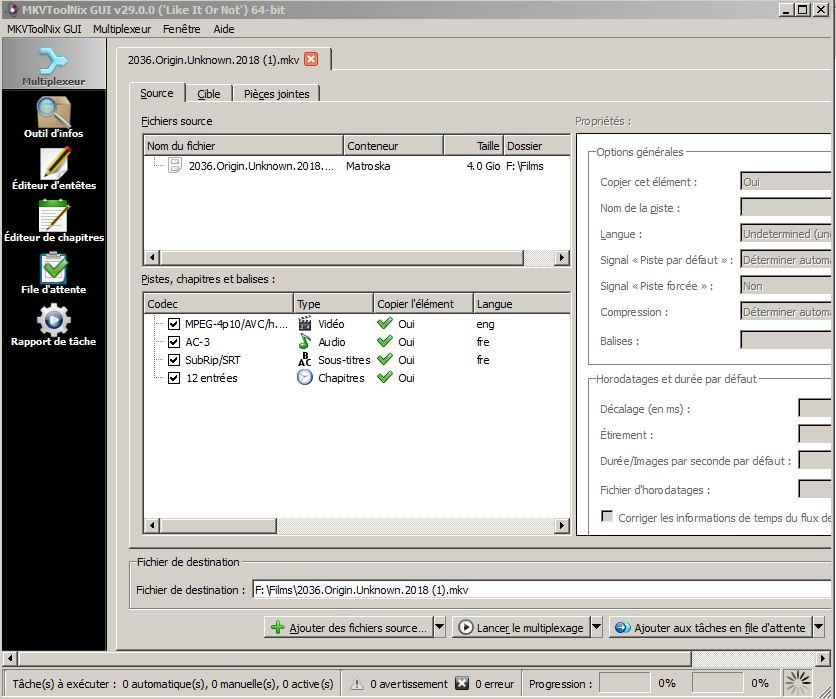

After this, I wanted to mux the content of an AVI file in MKV format. The program required just 45 seconds for this operation and the result was 14 smaller MKV files. Finally I clicked on “Start Muxing” button. I selected a 710 MB MKV file and I wanted to split this (from “Global” tab – select “Split Mode” – “split after size” and then I specified the size – in this case 50M = 50MB) in smaller files with a size of 50 MB for each. I went to program interface at the “Input” tab and used the “Add” button (it also works using the “drag and drop” method.

At a first look, the interface looks quite intuitive so my first action was to open an MKV file, select an option and see the result. I wanted to test two things: the mkvmerge GUI (software interface) and see how easy or hard is to use the command line for all the other tools such as “mkvinfo”.Īs soon as the setup finished, I opened the “mkvmerge GUI” shortcut from my desktop. Therefore, if you’re looking for more information on how to compile MKVToolNix yourself, check the README file (online). Note: I tested MKVToolNix on Windows 7 Ultimate 32-bit using mkvmerge GUI and several other tools opened from the Command Prompt such as mkvinfo. The program will also work with other video formats (AVI, MPEG, MP4, MPEG, Ogg/OGM, RealVideo, MPEG1/2, h264/AVC, Dirac, VC1) including some video codecs (such as VP9 video codec support – reading from IVF/Matroska/WebM files, extract to IVF files), audio (AAC, FLAC, MP2, MP3, (E)AC3, DTS/DTS-HD, Vorbis, RealAudio) and also most subtitle formats (SRT, PGS/SUP, VobSub, ASS, SSA etc.). You can use MKVToolNix to create, split, edit, mux, demux, merge, extract or inspect Matroska files. This is a small collection of tools (mkvmerge, mkvinfo, mkvextract, mkvpropedit and mmg) that allows you to manipulate Matroska (MKV) files in several ways. Download MKVToolNix from our software library for free.


 0 kommentar(er)
0 kommentar(er)
